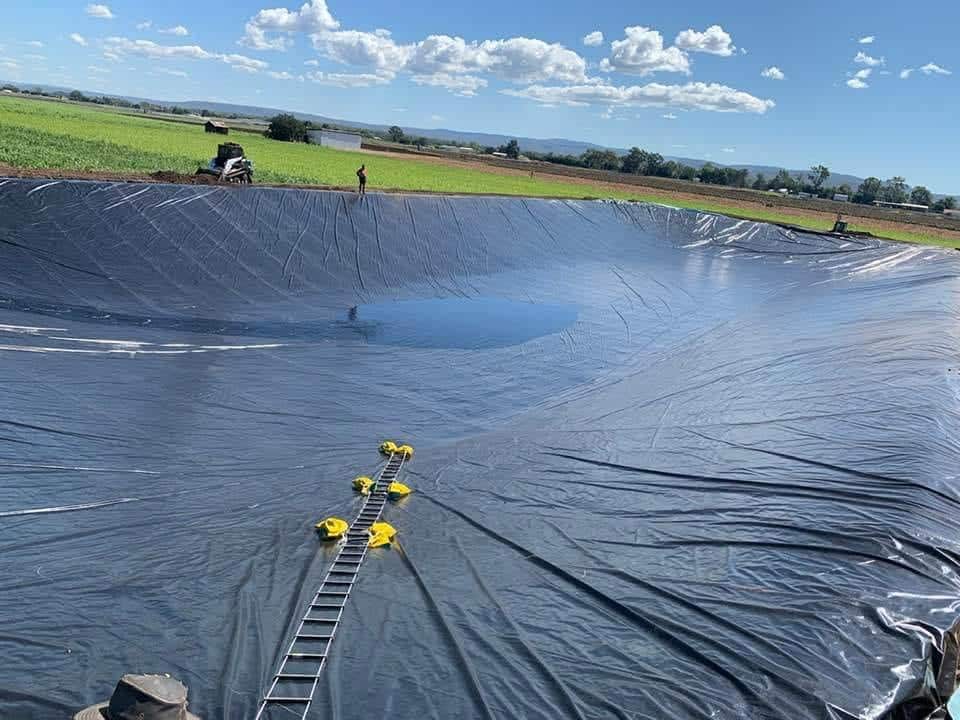Our Latest News
Check out what we have been up to lately!
Things To Know Before Installing A Dam Liner
Installing a dam liner is a crucial investment that ensures the sustainability and efficiency of water storage systems on your property. The choices you make during this process can have a long-lasting impact, making it imperative to be well informed before making any decisions. From understanding various materials to considering site-specific requirements, there’s a lot to think about. This comprehensive guide is here to help navigate you through these important aspects.

Understanding the Types of Dam Liners & Material Choices
Selecting the appropriate type of dam liner is akin to laying the foundation for a building; it sets the stage for the long-term performance of your dam. Here, we’ll focus on three heavyweight contenders in the dam liner world: Polyethylene, Polypropylene and HDPE liners.
- Polyethylene (often abbreviated as ‘Poly’): Polyethylene liners are versatile, durable and can handle a heavy workload. They’re resistant to chemicals, which makes them ideal if you’re using the dam for various applications.1. Polyethylene (often abbreviated as ‘Poly’): Polyethylene liners are versatile, durable and can handle a heavy workload. They’re resistant to chemicals, which makes them ideal if you’re using the dam for various applications.
- Polypropylene: Let’s say you’re not only interested in water storage but also in maintaining the water quality for aquaculture or a serene natural habitat. Polypropylene liners offer excellent flexibility, allowing for a more customised fit to your dam’s contours, and they’re known for their resistance to cracking under stress or temperature changes.
- HDPE (High-Density Polyethylene): HDPE liners are exceptionally resistant to environmental stress cracking and are perfect for industrial settings or where the water might have a higher chemical concentration.
Pre-Installation Considerations: Site Preparation & Assessment
Before getting started, a thorough site assessment is necessary. Here are some key aspects:
- Soil Test: Understanding the soil composition helps in determining the type of liner that will be most compatible.
- Topographical Survey: A detailed layout of the land helps in planning the placement and size of the dam.
- Climate Analysis: Knowing the weather patterns and seasonal changes can influence the material choice and installation methods.
- Regulatory Compliance: It’s essential to consult with local authorities to ensure that your dam project is compliant with zoning laws and environmental regulations.
Installation Best Practices & Common Mistakes to Avoid
Poor installation can negate even the best material choice. Here are some best practices to ensure a smooth installation process:
- Proper Seaming: The edges of the liner must be sealed properly to prevent leakage.
- Avoiding Underlaps: It’s crucial to avoid creating points where the liner could potentially fold under itself, creating leaky spots.
- Adequate Anchoring: The liner must be anchored securely to prevent shifting, which could lead to structural failures.
Common Mistakes:
- Neglecting to conduct a thorough site analysis
- Neglecting to conduct a thorough site analysis- Skimping on material quality to save costs
- Ignoring professional advice in favour of DIY solutions
The importance of selecting the right dam liner and properly installing it cannot be understated. It’s a complex process that requires proper planning, site evaluation and adherence to best practices. For those seeking expert guidance and quality materials, Darling Downs Tarpaulins is your go-to destination. Get in touch with us to learn more about our range of pond and dam liners in Toowoomba and make an informed investment that lasts for years to come.
